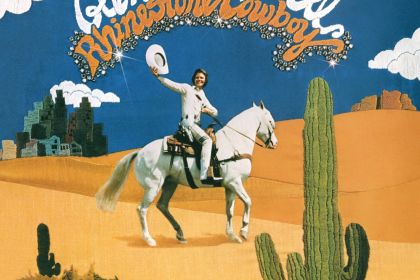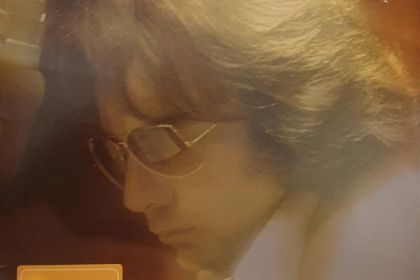SONGWRITER
Bandy the Rodeo Clown: country song about bullfighting

Bandy the Rodeo Clown single cover
The profession of a rodeo clown is more similar to that of the classic bullfighting matador than the title may initially suggest. Traditionally, the role of the rodeo clown was intended to bring humorous elements to the competition while protecting the rider who’d been thrown by the bull.
To protect bull riders from being trampled or gored by a loose bull, the rodeo clown commonly avoids the bull by means of dodging, jumping, and use of a barrel. The use of barrels as a method of defense against an angry bull led to the origin of the word barrelmen—another well-known term marking rodeo clowns.
Probably one of the best-known songs about bullfighting is Bandy the Rodeo Clown—a country track originally written and recorded by Sanger D. Shafer and Lefty Frizzell. In 1975, the song gained wide exposure when country singer Moe Bandy recorded his version, which reached number 7 on the US Hot Country Songs. Curiously, Moe Bandy himself was well acquainted with bullfighting, as he’d rodeoed as both a rider and a rodeo clown before turning to music.
Listen to Bandy the Rodeo Clown by Moe Bandy:
Compositionally, Bandy the Rodeo Clown follows the Western tonal theory and features chord progressions representing the Ionian mode. In the harmonic analysis of the verses' chord chains, the scale degrees (denoted with Roman numerals) show the looping three-chord progressions in the key of F major: F–Gm–C7–F or I–ii–V7–I.
This chord chain is formed by an essential musical turnaround—involving supertonic and dominant chords—which often appears in classical works at the end of musical sections.
In the bridge, the harmonic progression changes and shows the classic case of tonicization: B♭–C7–F–G7→C7 or IV–V7–I–V7/V→V7. The chord chain is closed by the tonicization of the fifth scale degree, where the G7 secondary chord is used to temporarily shift the tonal center to C major.
Discover more songs composed in Ionian major mode and check out their harmonic analysis in the following articles:
- 6 songs to unpack Ionian mode and the major scale
- 9 Beatles songs that combine harmonic major with Ionian mode
- Coal Miner's Daughter was forced to remove a third of the lyrics from her autobiographical song
- Rhinestone Cowboy: origins of Glen Campbell's best-known track
- Smackwater Jack: the classic tale of outlaws and lawmen and the blues harmony behind it
- Carolina in the Pines: origins of Michael Murphey's love song
- Longfellow Serenade and the fireside poet that kindled Neil Diamond's song
- Wildwood Weed: the cheeky ganja farmers song that got banned



